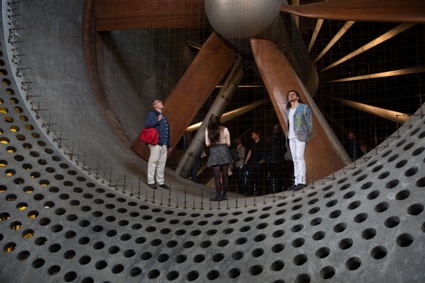 Guest exploring wind turbine in Q121. Image György Kőrössy
Guest exploring wind turbine in Q121. Image György Kőrössy
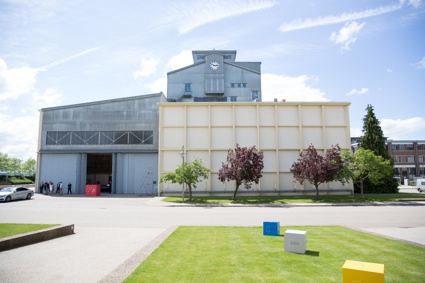 Outside view of Q121. Image György Kőrössy
Outside view of Q121. Image György Kőrössy
I know you’re not supposed to ever be tired of London but if you feel like a change of atmosphere, there’s some rather spectacular disused wind tunnels to gape at in Farnborough, a mere 35 minute train ride from Waterloo station.
The Wind Tunnel project filled with site-specific commissions two wind tunnels buildings, known as R52 and Q121, that were built to test planes, from Spitfires to Concorde. These buildings were decommissioned after the 1960s and have remained closed to the public ever since.
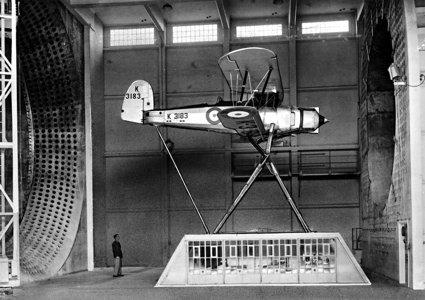 A Bristol Bulldog TM, K3183 fitted with a Napier Rapier I engine, suspended in the 24ft Q121 wind tunnel, 1935. Photo courtesy of Farnborough Air Sciences Trust
A Bristol Bulldog TM, K3183 fitted with a Napier Rapier I engine, suspended in the 24ft Q121 wind tunnel, 1935. Photo courtesy of Farnborough Air Sciences Trust
Opened in 1935, Q121 is the largest wind tunnel in Great Britain. Inside, two gigantic holes face each other. One is a powerful fan with 600kg blades which would drag air fast and furious across the space between them to test complete planes and sections of bigger airplanes.
R52 was built in 1917. It is now an empty hangar but it used to house one of the world’s earliest aerodynamic testing facilities.
Contemporary artworks by James Bridle and Thor McIntyre-Burnie explore the past of the buildings.
McIntyre-Burnie’s sound pieces makes use of archive materials from the BBC to fill the impressive Q121.
The basis of his sound work is an outside recording made by the BBC of the song of a nightingale in 1942 in a garden in Surrey. It was a yearly broadcast since 1924 but this year, the microphone accidentally picked up the sound of RAF bombers flying overhead on their way to Germany. The program had to be interrupted, for fear it would have tipped off Germany about the upcoming bombing attack.
McIntyre-Burnie’s new composition fills the wind tunnel. It doesn’t try and compete with the impressive structure (that would be foolish.) In fact, it make the whole experience of going through the historical space even more awe-inspiring.
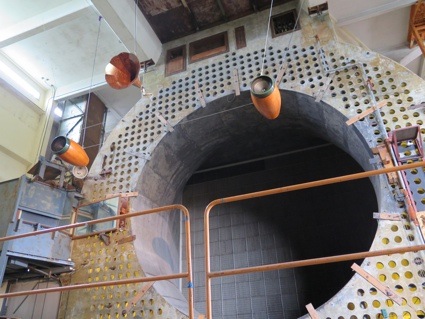
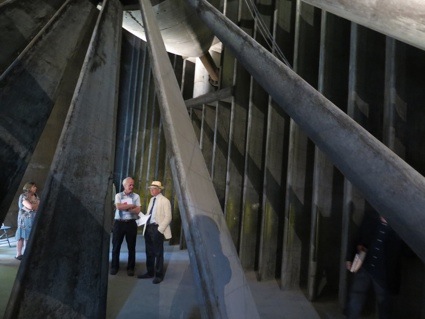 In Q121
In Q121
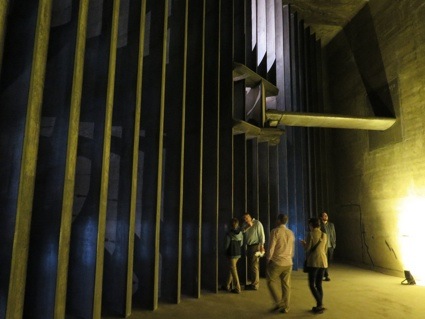 In Q121
In Q121
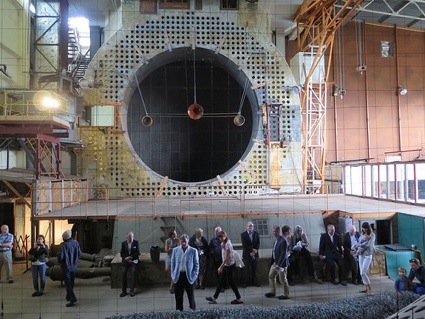 In Q121
In Q121
One of Bridle’s works, Rainbow Plane 001, also paid homage to the history of the site. The installation outlines the silhouette of a Miles M.52, an experimental supersonic aircraft developed in secret to break the sound barrier at Farnborough in the early 1940s.
The contour is shown as if distorted by the pansharpening effect of satellite photography, as if viewed, in flight, from space. There never was any original photography of that Miles M.52 in flight. First of all because, the aircraft never flew. It was a research project that was cancelled in 1946 even though its aerodynamics had been successfully demonstrated by a scale model. Besides, satellites don’t take ‘photos’ of what lays below them. Instead, they use sensors to look down onto the earth and acquire information about its surface and atmosphere.
Rainbow Plane 001 is ducted tapped under the site’s portable airship hangar. The structure was one of the 6 airship sheds in the UK at the outset of WWI and it probably isn’t as ‘portable’ as its name suggests. It is estimated that it would take 50 men ten days to dismantle the structure, 7 to load it onto railway and 2 to 3 weeks to reassemble it.
 James Bridle, Rainbow Plane 001. Image György Kőrössy
James Bridle, Rainbow Plane 001. Image György Kőrössy
 James Bridle, Rainbow Plane 001. Image György Kőrössy
James Bridle, Rainbow Plane 001. Image György Kőrössy
The Wind Tunnel Project was organised by Artliner and curated by Salma Tuqan. I must say that the website of the project is one of the most frustratingly dysfunctional i’ve ever visited. Anyway, you can see the tunnels and artworks in Farnborough until the 20th of July. A shuttle service is helpfully available outside the Farnborough railway station.
More images from the wind tunnel (I also posted a photo set from the opening on flickr, if ever you’re interested):
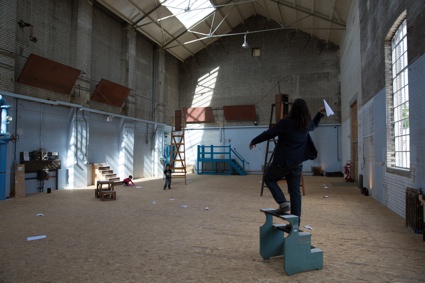 Launching paper planes in R52
Launching paper planes in R52
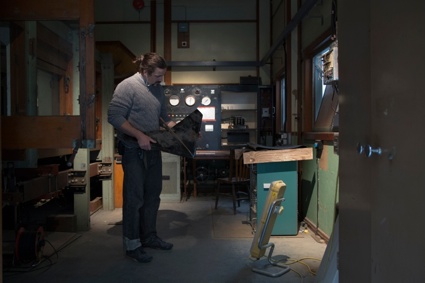 Control room for wind turbine in R52. Image Shaun Jackson
Control room for wind turbine in R52. Image Shaun Jackson
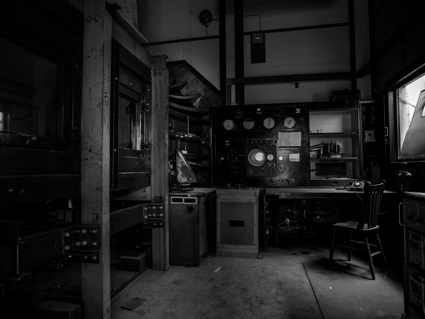 Control room for wind turbine in R52. Image Jay McLaughlin
Control room for wind turbine in R52. Image Jay McLaughlin
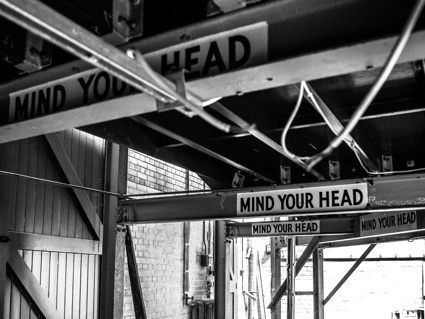 Support structure underneath R52 wind turnbine. Image Jay McLaughlin
Support structure underneath R52 wind turnbine. Image Jay McLaughlin
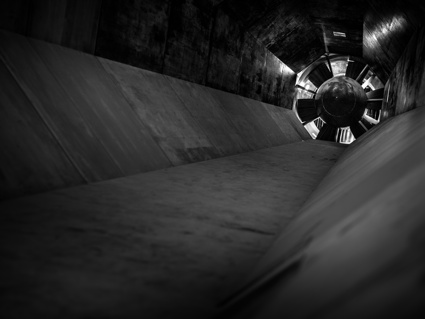 Inside R52 turbine. Image Jay McLaughlin
Inside R52 turbine. Image Jay McLaughlin
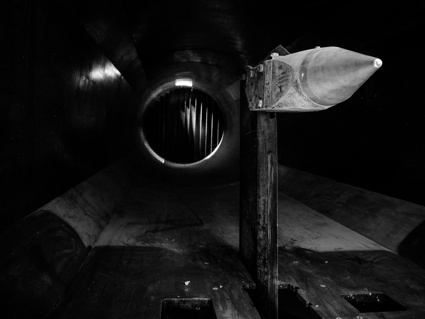 Inside wind tunnel in R52. Image Jay McLaughlin
Inside wind tunnel in R52. Image Jay McLaughlin
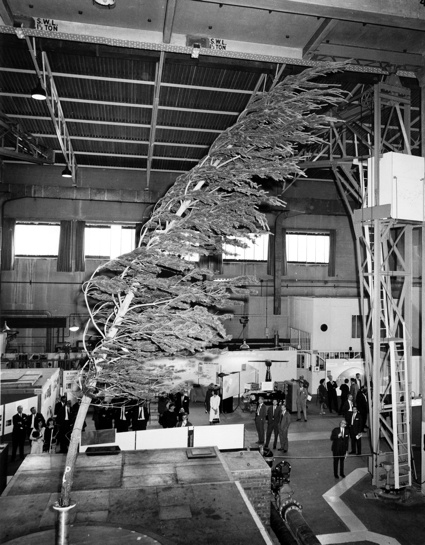 Testing of fir tree root loads for the Forestry Commission in 1967. Image courtesy of FAST (Farnborough Air Sciences Trust) Museum
Testing of fir tree root loads for the Forestry Commission in 1967. Image courtesy of FAST (Farnborough Air Sciences Trust) Museum
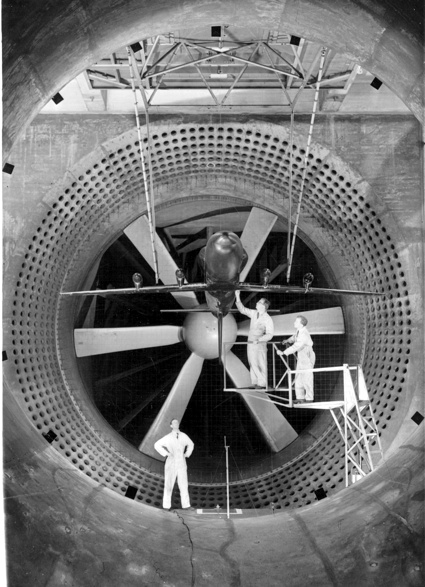 Wind tunnels project Testing of the Short Belfast aircraft in 1968. Photograph: Courtesy of Farnborough Air Sciences Trust
Wind tunnels project Testing of the Short Belfast aircraft in 1968. Photograph: Courtesy of Farnborough Air Sciences Trust
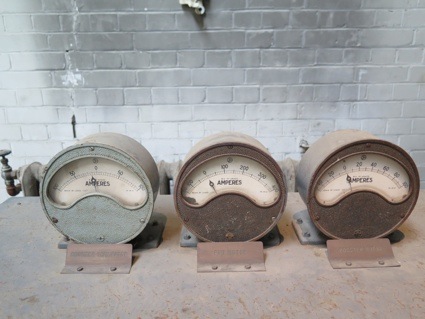 In R52
In R52
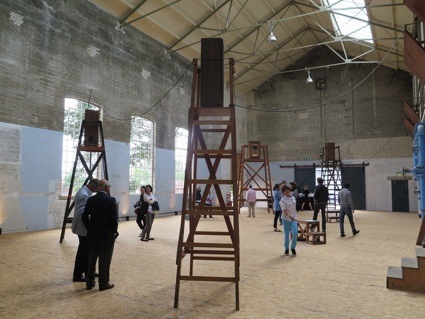 In R52
In R52
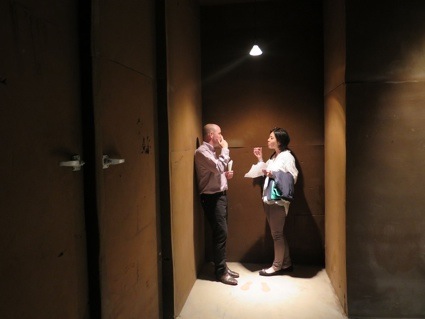 In R52
In R52
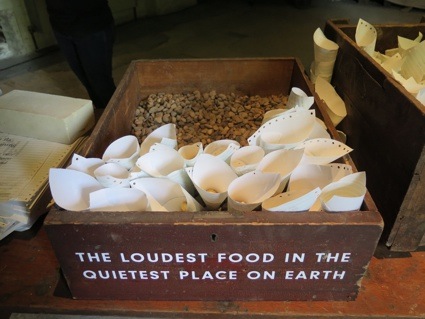 In R52
In R52
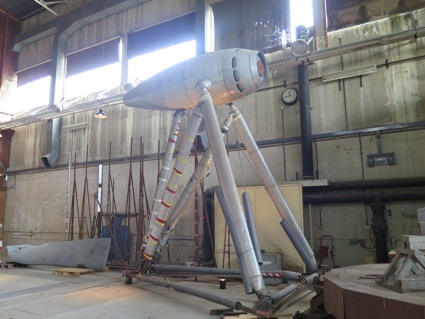 In Q121
In Q121
